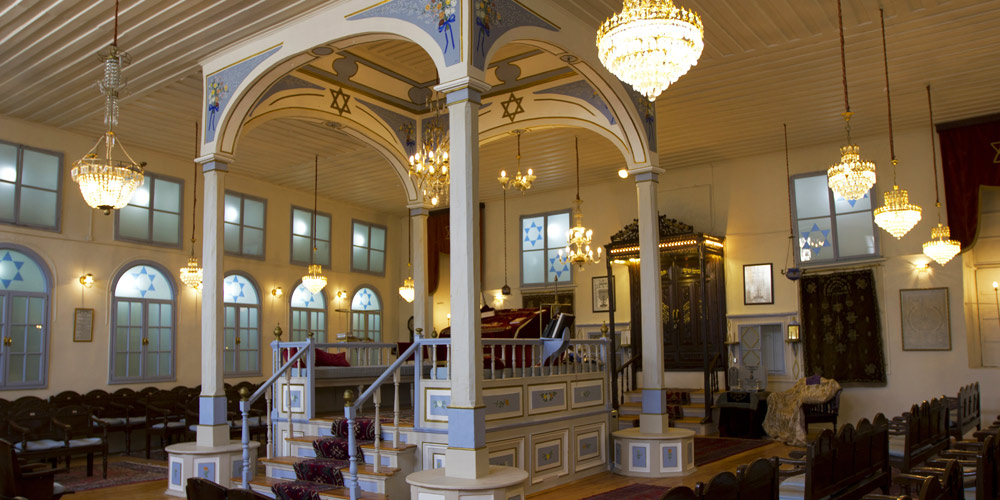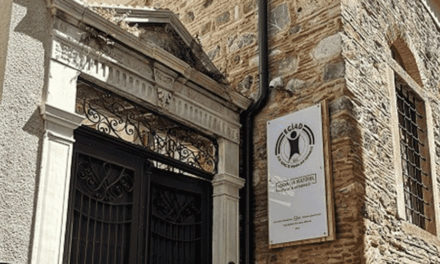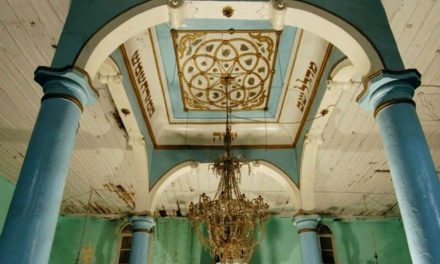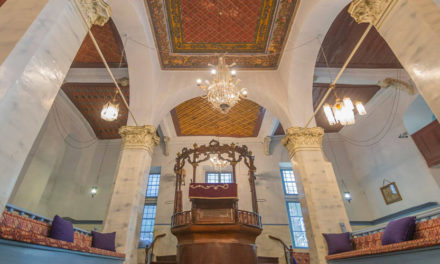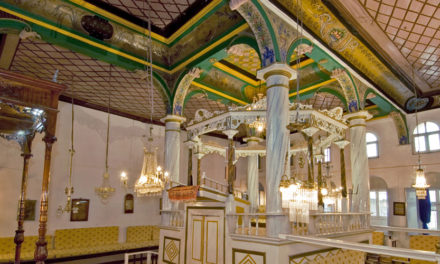As it will be understood from the inscription at the gate of the Algazi Synagogue, which is also called Kal de Arriva (upper synagogue), it is agreed to have been erected in 1724 by Isaac Algazi of the Algazi Family that brought up prominent rabbis. Another view claims that this synagogue had existed long ago and controlled by Sabbatai Sevi in 1666. The inscriptions in the courtyard and gate which date back to 5649 (1889) and 5661 (1901) respectively remind of the dates of a reconstruction or any other significant repair of the synagogue after the great fire of 1841.
As in most of the Izmir synagogues, a cabinet on either side of the central Ehal constitutes a triple bloc. Tevah is in the centre of the main place of worship. On the right hand side of Ehal is the seat of the famous Chief Rabbi of Izmir, Abraham Palachi.
In the unroofed courtyard of the synagogue is seen a door which opens to the lower storey. The said lower storey was used as a Midrash in the past and was a place where ten old men (asara batlanim) prayed for the salvation of the country and the community all day long. Also, any unused holy books and objects were stored there before they were buried. This place is called Kal de Abasho (lower synagogue).
It is rumoured that, in this place of worship which had been considered to be one of the most important synagogues of Izmir by the early 20th century, it was decided to demolish the Azara (women’s loge) because a young Hazzan was detected to wink at a seated lady on Yom Kippur (Atonement Day) and it has been never built again.
Another person whose name is associated with the Algazi Family and with this synagogue is Isaac Ben Salomon Algazi. Born in 1889, Isaac Algazi was educated at Yeshiva Bet Hillel (religious school) of Hayim Palachi, famous rabbi of Izmir, and was a Hazzan at the Algazi Synagogue like his ancestors and perhaps became the greatest Sephardic composer of the first half of the twentieth century. In fact, Algazi Efendi gained the admiration of not only the Jews but the Turks as well and was ranked as an artist who was renowned by all the music circles. Due to his knowledge and mastery in music, he was called “Hodja” by the Turks. The synagogue is near the Havra (Synagogue) Street at Kemeralti.

